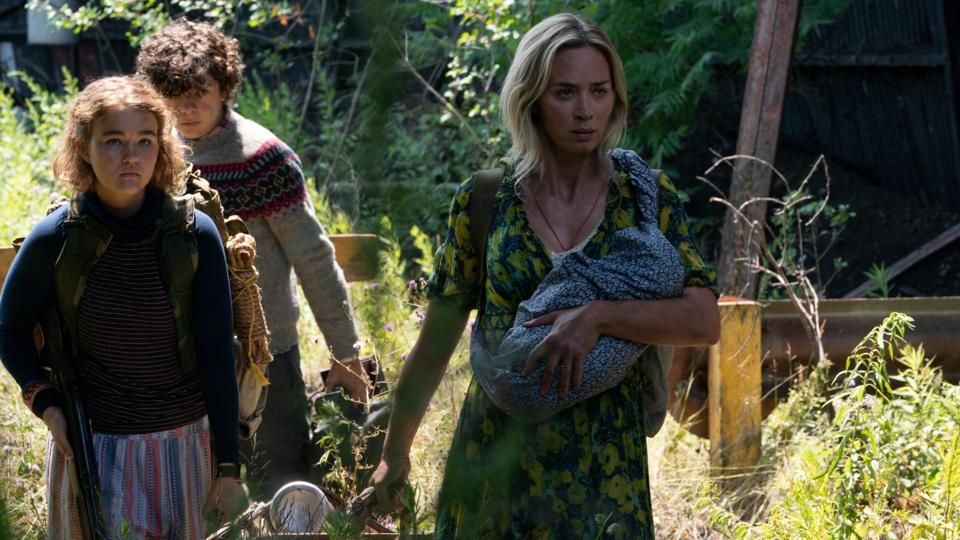
A Quiet Place Part II is an American horror film, and the trailer for this film effeciently shows the type of film this is using visual codes and stereotypes of horror films. The trailer also helps introduce the chronology of the film with inter-titles showing the day since a supposed incident. This helps to add suspense to the film and aids the mystery factor to help entice audiences to watch the film. the clever use of sound and editing helps to pace the trailer and also let the viewers feel the scene as the characters are experiencing it. A very important skill in a trailer is the ability to establish an emotional connection between the audience and the characters involved. I think this trailer executes this very well, as audiences will take the side of the protagonists (the family) and want them to survive the rest of the film.
A large USP to this film will be the cast, with prestigious actors like Emily Blunt taking the forefront of many of the scenes in this trailer. The extended screen time she has in the trailer emphasises her position as a main character. Another USP would be the type of film that it is, with dialogue being a small aspect of the film and the hair-raising close calls being a large part of the film. This differs from most other horror films which tend to be much more gore based and frequent 'jump scares'. This will entice an audience as it is a new type of horror and this specific film being a sequel will also retain an already gained target audience.
 |
| Emily Blunt is the key actor. |
The camerawork in this trailer aids to portray the scenes in a post-apocalyptic fashion. In the trailer we see a low shot of a tripwire that is set up to an alarm. This low shot allows the audience to follow the movement of the characters and helps to build anticipation and fear as the alarm sets off. It is obvious in the trailer that there is a threat, and the view from the sniper's scope on the running family also gives the impression that there is someone watching the family, possibly with the intention to kill. This followed with an over-the-shoulder shot of the family being 'kidnapped' This is very effective as it adds further to the "every man for themselves" lifestyle of a post-apocalyptic world. There is a large emphasis on birds eye view shots of the family. This accompanied with the sniper scope further suggests that the family is not only prey to the unknown creature, but also the people around them. Wide shots of the surrounding scene also help to portray a post-apocalyptic scene as there are derelict buildings, ivy on the sides of buildings and there is a lot of rubbish strewn on the floor. This connotes a sense of carelessness as people are caring more about their own safety and survival over their surroundings. Only in a location of security will you find buildings that have been up-kept.
The dialogue and the sound used in the trailer is also a key aspect as the name of the film gives away some of the premise. Lots of the dialogue is whispered after the initial action of the first sequence. This allows the audience to come to the conclusion that the creature in the film is sensitive to sound and that the characters need to stay quiet in order to survive. There are small mise-en-scene indications to this as the family doesn't wear shoes in this to decrease the amount of sound they give off by walking. The dialogue also helps to inform the audience who is friend or foe. It is made clear that the initial threat of a lone sniper is quenched as he is established as a friend later on. The dialogue also helps to give context to the story and how the main characters can survive the mysterious beast. The key aim for the dialogue in a trailer is to develop the context of the story being told without giving away too much. I think that this trailer expertly does this and is able to entice the audience with enough information.


Good analysis that shows personal engagement. You reflect on the importance of a trailer's establishing an emotional connection with the audience: you grasp how this trailer makes the audience share the fear of capture and how ploys like jump scares, techniques like over-the-shoulder shots and the post-apocalyptic mise-en-scene function. You explore thoughtfully the use of sound, such as dialogue to give context.
ReplyDelete